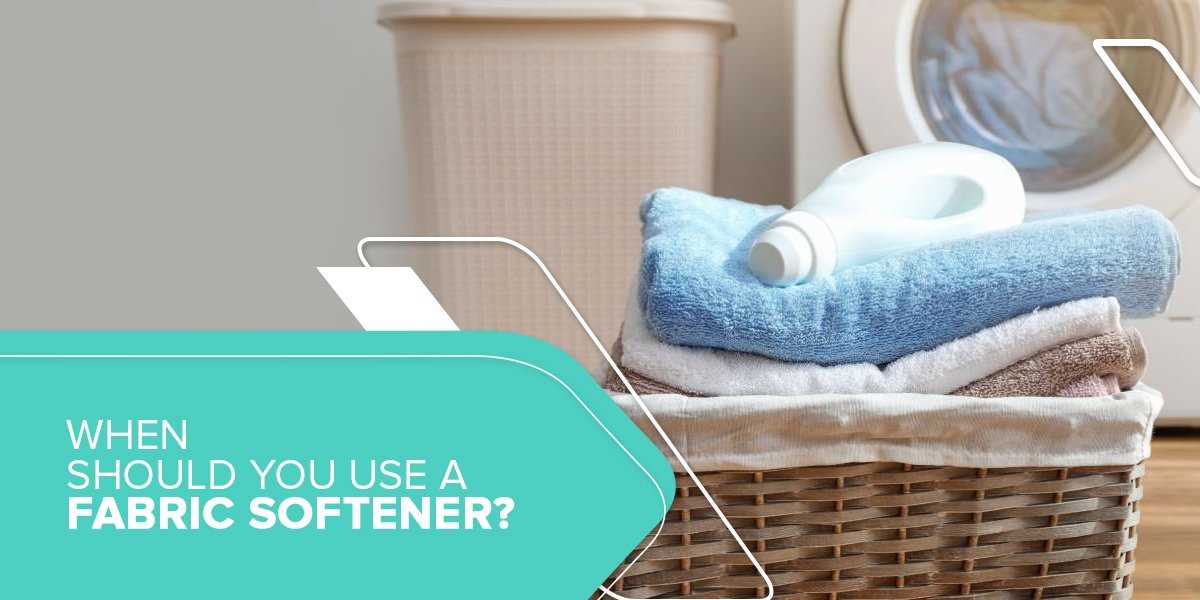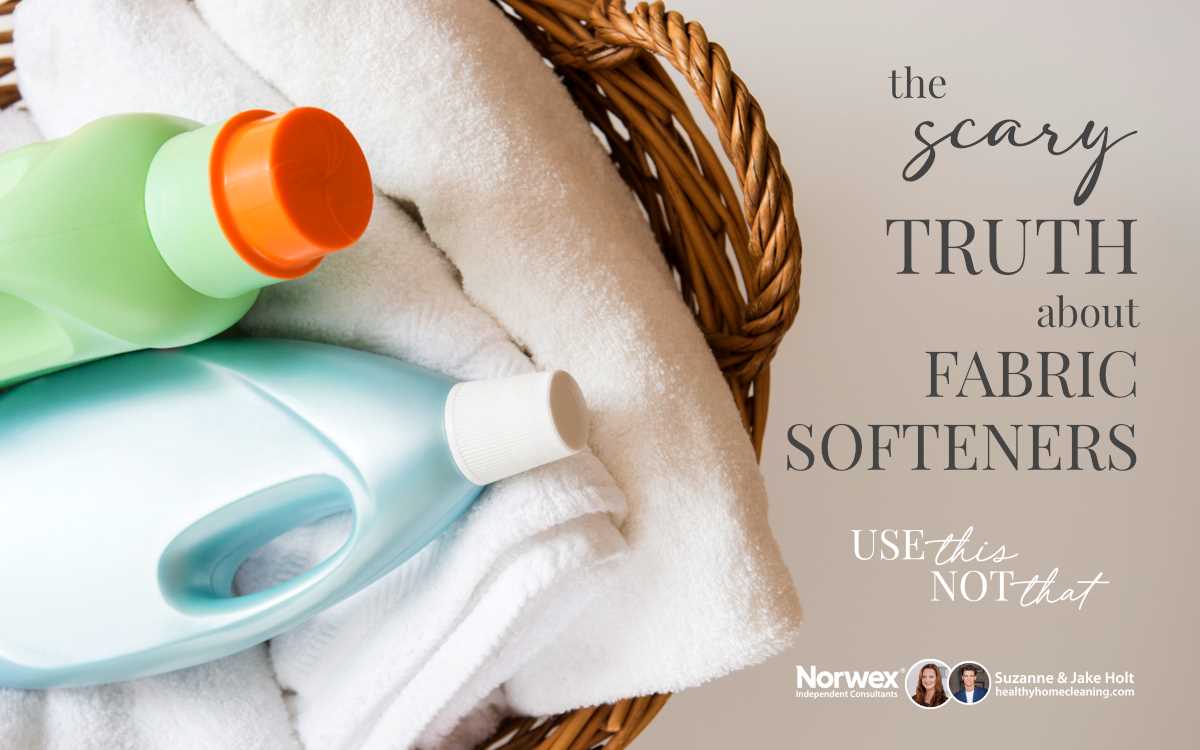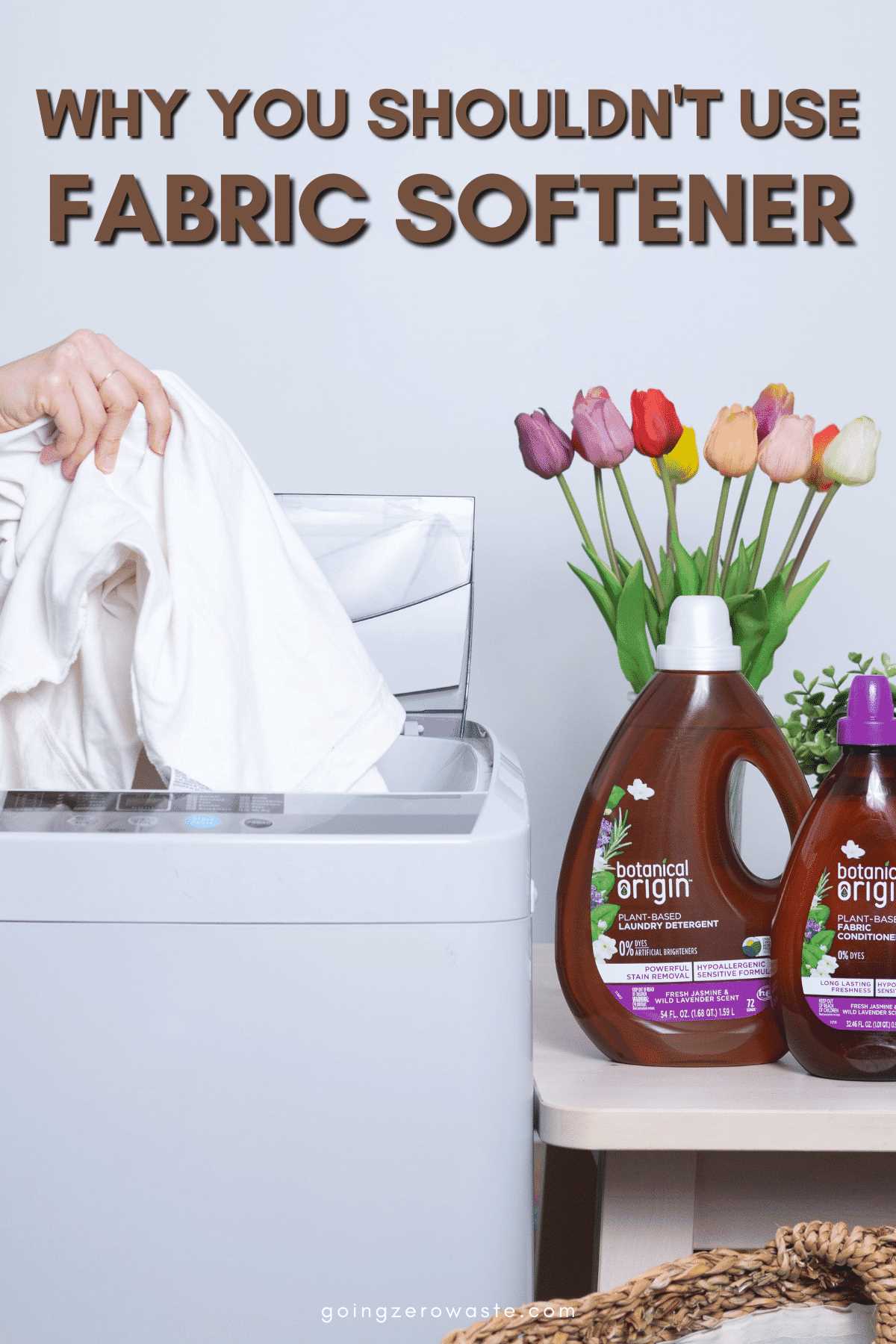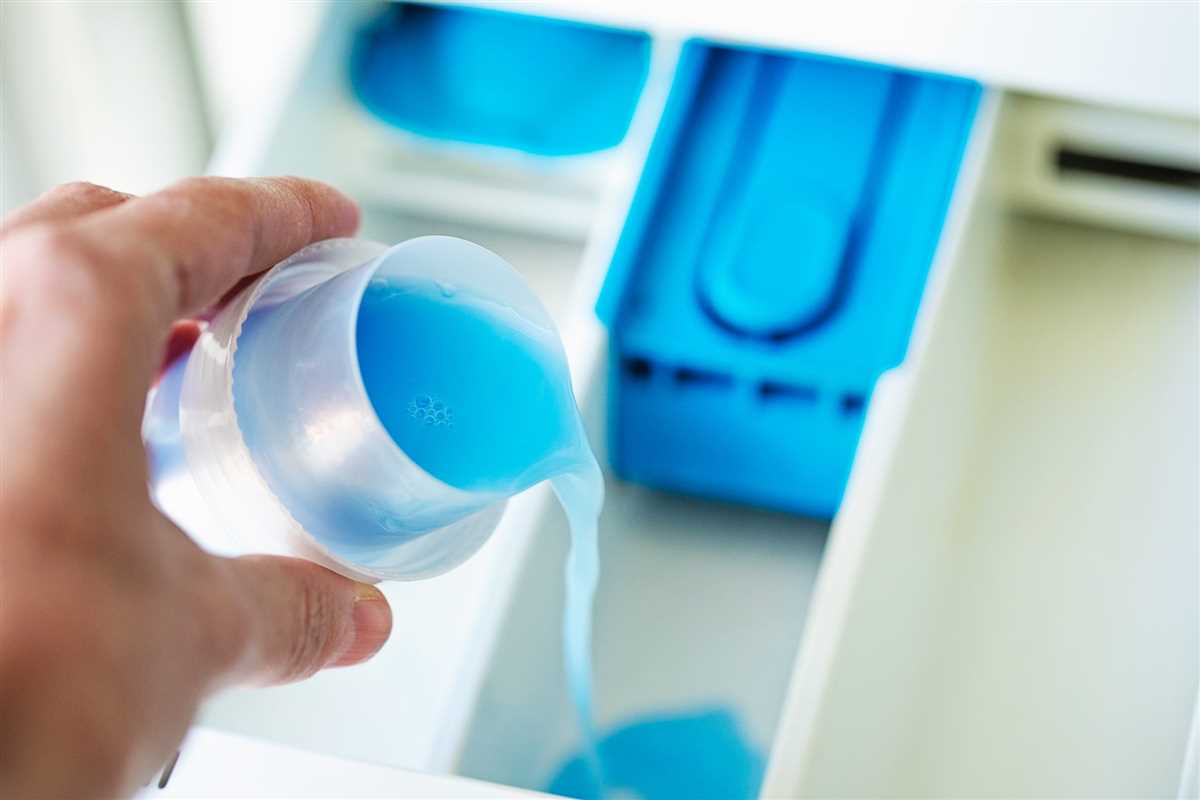




Fabric softener can be a useful addition to your laundry routine, providing extra softness and a fresh scent to your clothes. However, there are certain situations when it’s best to skip the fabric softener altogether. In this article, we’ll explore when and when not to use fabric softener, based on expert tips and advice.
When to Use Fabric Softener:
1. Regular laundry loads: Fabric softener can be used in most regular laundry loads, especially if you prefer your clothes to have a soft feel and a pleasant scent. It can help to reduce static cling and make ironing easier.
2. Towels and linens: Fabric softener can be particularly beneficial for towels and linens, as it can help to maintain their softness and absorbency. It can also help to reduce any residual detergent smell.
“Using fabric softener on towels and linens can help to keep them feeling plush and comfortable,” says laundry expert Jane Smith. “Just be sure to follow the manufacturer’s instructions and avoid using too much, as it can negatively affect absorbency.”
When Not to Use Fabric Softener:
1. Athletic wear: Fabric softener can leave a residue on athletic wear, which can reduce their moisture-wicking properties. This can make them less effective in managing sweat and odor.
2. Flame-resistant clothing: Fabric softener should not be used on flame-resistant clothing, as it can reduce their flame-resistant properties. This is particularly important for children’s sleepwear and work uniforms.
“If you have flame-resistant clothing, it’s essential to avoid fabric softener, as it can compromise the safety properties of the fabric,” advises safety expert John Johnson. “Always check the care label and follow the manufacturer’s instructions.”
“Fabric softener can be a great addition to your laundry routine, but it’s important to know when to use it and when to skip it,” summarises Jane Smith. “By following these expert tips, you can ensure the best results for your clothes and avoid any potential issues.”
When to Use Fabric Softener on your Clothes: Expert Tips
1. For Extra Softness
Using fabric softener is a great option when you want your clothes to feel extra soft and luxurious. Fabric softeners work by adding a coating to the fibers of your clothes, which reduces friction and leaves them feeling smoother to the touch.
2. When Clothes are Stiff or Rough
If your clothes are coming out of the wash feeling stiff or rough, adding fabric softener can help to alleviate this issue. The softening agents in fabric softener will help to relax the fibers, making them feel softer and more comfortable against your skin.
3. To Prevent Static Cling
Fabric softeners are known for their ability to reduce static cling in clothes. If you find that your garments are sticking together or clinging to you when you wear them, using fabric softener in the wash can help to eliminate this problem.
4. For Scented Clothes
If you love the smell of freshly laundered clothes, using fabric softener can help to infuse your garments with a delightful fragrance. There are many different scents available, so you can choose one that suits your preferences.
5. When Drying Clothes Indoors
If you prefer to air dry your clothes indoors, using fabric softener can help to reduce stiffness and improve the overall feel of your garments. Fabric softener can also help to reduce drying time by loosening the fibers, allowing them to dry more quickly.
6. For Certain Types of Fabric
Fabric softener is particularly beneficial for certain types of fabrics that tend to become stiff or lose their softness over time. This includes fabrics such as towels, bed sheets, and clothing made from natural fibers like cotton or linen.
7. During the Winter Months
In colder climates, fabric softener can be especially useful during the winter months when clothes are more prone to static cling due to the dry air. Adding fabric softener to your wash can help to eliminate static and keep your clothes feeling soft and fresh.
| When to Use | When Not to Use |
|---|---|
|
|
Note: It’s important to read and follow the instructions on the fabric softener packaging to ensure proper usage and avoid any potential damage to your clothes.
After Washing Delicate Fabrics
When it comes to washing delicate fabrics, it’s important to take extra care in order to preserve their softness and quality. Here are some tips for what to do after washing delicate fabrics:
1. Gently squeeze out excess water.
After washing delicate fabrics, avoid wringing or twisting them to remove excess water. Instead, gently squeeze the fabric to remove the water without causing any damage.
2. Avoid using a dryer.
Delicate fabrics should not be put in a dryer, as the heat and tumbling can cause them to shrink or lose their shape. Instead, air-dry them by laying them flat on a clean towel or hanging them up to dry.
3. Pat dry with a towel.

Before air-drying, gently pat the fabric with a clean towel to remove any remaining moisture. Be careful not to rub the fabric vigorously, as it can cause damage or pilling.
4. Iron with caution.
If ironing is necessary, use a low heat setting and place a clean cloth or pressing cloth between the iron and the fabric to protect it. Avoid using steam, as it can cause water spots or stretching on delicate fabrics.
5. Store properly.
Once the delicate fabric is dry and ironed (if necessary), store it in a cool, dry place. Avoid hanging delicate fabrics for long periods of time, as it can cause stretching. Instead, fold them neatly and place them in a drawer or on a shelf.
By following these tips, you can help prolong the life of your delicate fabrics and keep them looking beautiful and soft for years to come.
Enhancing the Softness of Towels and Bedding
When it comes to towels and bedding, achieving ultimate softness can greatly enhance your comfort and overall enjoyment. Follow these expert tips to enhance the softness of your towels and bedding:
1. Choose High-Quality Materials

The first step in enhancing softness is to choose towels and bedding made from high-quality materials. Cotton is known for its softness and absorbency, making it an excellent choice for towels and bedding. Look for towels and bedding made from Egyptian or Turkish cotton, as these are known for their luxurious feel.
2. Use Fabric Softener Properly
Fabric softener can help to make towels and bedding softer. However, it’s important to use fabric softener properly to achieve the best results. Add the recommended amount of fabric softener to the designated dispenser in your washing machine or during the rinse cycle. Be sure not to overload the machine, as this can prevent the fabric softener from properly dispersing.
3. Avoid Overdrying
Overdrying towels and bedding can lead to a rough texture. To enhance softness, avoid over drying your items. Instead, remove them from the dryer when they are still slightly damp and allow them to air dry the rest of the way. This will help to preserve the softness and prevent any unwanted stiffness.
4. Use Vinegar
Vinegar can be a natural and cost-effective way to enhance the softness of towels and bedding. Simply add half a cup of distilled white vinegar to the rinse cycle of your washing machine. The vinegar will help to break down any residue left behind by detergent and leave your towels and bedding feeling softer.
5. Avoid Excessive Using of Bleach
While bleach can be a useful tool for whitening towels and bedding, excessive use can actually damage the fibers and lead to a rough texture. Instead of relying solely on bleach, try using whitening agents specifically designed for towels and bedding, and follow the instructions carefully to maintain the softness.
Conclusion
By choosing high-quality materials, using fabric softener properly, avoiding over drying, using vinegar, and avoiding excessive use of bleach, you can enhance the softness of your towels and bedding. These tips will help to create a luxurious and comfortable experience every time you use them.
Reducing Static Cling in Synthetic Fabrics
Static cling is a common problem with synthetic fabrics, such as polyester and nylon. When these fabrics rub against each other or other materials, they can create static electricity, causing them to stick together and cling to the body. This can be uncomfortable and annoying, especially during the dry winter months. Fortunately, there are several ways to reduce static cling in synthetic fabrics.
1. Use Fabric Softener
One of the easiest ways to reduce static cling in synthetic fabrics is by using fabric softener. Fabric softeners contain chemicals that help neutralize the static charge and make the fibers more slippery, reducing friction and static cling. Simply add fabric softener to the rinse cycle of your washing machine or use a dryer sheet when drying your clothes. This will leave your synthetic fabrics static-free and soft to the touch.
2. Avoid Overdrying
Overdrying your synthetic fabrics can exacerbate static cling. When fabrics are dried for too long, they can become excessively dry and static-prone. To prevent this, remove your synthetic garments from the dryer as soon as they are dry, or even slightly damp. The residual moisture will help maintain some level of moisture in the fibers, reducing the likelihood of static cling.
3. Humidity Control
Dry air lacks moisture, which can contribute to static cling. To combat this, consider using a humidifier or placing a bowl of water near your drying area. This will add moisture to the air, reducing the static charge in your synthetic fabrics. Additionally, using anti-static sprays can help add moisture and reduce static cling.
4. Natural Fiber Blend
If you frequently wear synthetic fabrics and struggle with static cling, consider opting for clothing items that are made from a blend of natural fibers and synthetics. Natural fibers, such as cotton or wool, tend to be less prone to static electricity buildup. Blending them with synthetic fibers can help reduce static cling while still benefiting from the desirable properties of synthetic fabrics, such as durability and moisture-wicking.
5. Grounding Techniques
In certain situations, grounding techniques can help discharge static electricity and reduce static cling. This can be as simple as touching a metal object, such as a doorknob or railing, before or while wearing your synthetic garments. The metal object acts as a conductor, allowing the static charge to be released and preventing it from building up on the fabric.
6. Avoiding Certain Materials
Some materials are more prone to creating static cling than others. Synthetic fabrics such as polyester, nylon, and rayon are notorious for static cling. Consider avoiding these materials or wearing them in combination with other materials that are less prone to static, such as natural fibers like cotton or silk.
By following these tips and incorporating them into your fabric care routine, you can significantly reduce static cling in your synthetic fabrics, making them more pleasant to wear and easier to manage.
Freshening Up Your Wardrobe

Keeping your wardrobe smelling fresh is essential for feeling confident and put together. Here are some tips for freshening up your clothes:
1. Regularly Air Out Your Clothes

One of the simplest ways to freshen up your wardrobe is to regularly air out your clothes. Hang them outside on a sunny day or near an open window to let fresh air circulate through them. This will help reduce any odours and leave your clothes smelling clean and fresh.
2. Use Fabric Fresheners
Fabric fresheners, such as sprays or sachets, can be a great solution for freshening up your wardrobe. Simply spray the fabric freshener onto your clothes or place the sachets in your drawers or closet. These products are designed to eliminate odours and leave a pleasant, long-lasting fragrance on your clothes.
3. Wash Your Clothes with a Fragrant Detergent
Choosing a fragrant detergent can make a significant difference in how your clothes smell. Look for detergents with a fresh scent that will leave your clothes smelling clean and pleasant. Be sure to follow the instructions on the detergent bottle for the best results.
4. Store Clean Clothes Properly
Properly storing your clean clothes can help keep them smelling fresh for longer. Make sure they are completely dry before storing them in your closet or drawers. Use airtight storage containers or garment bags to prevent any odours from seeping in. You can also place scented dryer sheets or lavender sachets among your clothes to add a fresh scent.
5. Avoid Using Fabric Softeners on Certain Fabrics
While fabric softeners can provide a soft feel and fresh scent to your clothes, they are not suitable for all fabrics. Delicate fabrics such as silk or wool may be damaged by fabric softeners. It’s best to check the care labels on your garments and avoid using fabric softeners on those that specifically recommend against it.
6. Hang Clothes After Wearing
After wearing an item of clothing, hang it up instead of throwing it in the laundry pile. This will allow it to air out and prevent any odours from setting in. If there are any visible stains or odours, spot clean the garment before hanging it up to prevent them from becoming set-in.
7. Refresh Clothes with Steam
If your clothes have developed a slight odour but are not yet dirty enough for a full wash, you can use a garment steamer to freshen them up. The steam will help eliminate any odours and wrinkles, leaving your clothes looking and smelling fresh.
By following these tips, you can keep your wardrobe smelling fresh and ensure that you always feel confident in your clothes.
Adding Fragrance to Your Laundry

One way to enhance the scent of your laundry is by adding fragrance during the washing process. There are a few different methods you can use to achieve this.
1. Fabric Softener

Using a scented fabric softener is a common way to add fragrance to your laundry. Fabric softeners come in a variety of scents, from fruity to floral, so you can choose one that matches your preferences. Simply add the recommended amount of fabric softener to your washing machine during the rinse cycle, and your clothes will come out smelling fresh and fragrant.
2. Scent Boosters
Scent boosters are small beads or pellets that are designed to dissolve in water and release fragrance. These can be added to your washing machine along with your laundry detergent. They are effective in giving your laundry a long-lasting scent. Scent boosters are available in various fragrances and can be mixed and matched to create a unique scent combination.
3. Essential Oils
A natural way to add fragrance to your laundry is by using essential oils. Add a few drops of your favorite essential oil to a small piece of fabric or a dryer sheet and toss it into the dryer with your clothes. The heat of the dryer will release the scent and transfer it to your laundry. Lavender, lemon, and eucalyptus are popular choices for their fresh and calming scents.
4. Dryer Sheets
Dryer sheets are not only useful for reducing static and softening clothes; they can also add a subtle fragrance to your laundry. Many dryer sheets come in scents like tropical breeze or spring garden, which can give your clothes a pleasant scent when they come out of the dryer. Simply toss a dryer sheet into the dryer with your clothes, and they will come out smelling freshly laundered.
Remember to follow the usage guidelines for each fragrance product to avoid using too much and potentially overwhelming your clothes with scent. Experiment with different fragrances and methods to find the combination that suits your preferences for fresh-smelling laundry.
FAQ
Why should I use fabric softener?
Fabric softener helps to make your clothes feel softer and smoother, reducing any stiffness caused by washing. It can also help to reduce static cling, making your garments easier to manage and wear.
When should I use fabric softener?
Fabric softener should be used during the rinse cycle of your washing machine, after the clothes have been cleaned with detergent. This allows the softener to coat the fibers of the fabric, providing the desired softness and fresh scent.
Can I use fabric softener on all types of fabrics?
No, fabric softener should not be used on certain fabrics, such as athletic wear, microfiber, and towels. These fabrics are designed to be absorbent and using fabric softener can coat the fibers, reducing their absorbency and effectiveness.
What are the alternatives to fabric softener?
If you prefer not to use fabric softener, there are alternatives that can provide similar results. Adding a cup of white vinegar or a half cup of baking soda to the rinse cycle can help to soften clothes and reduce static cling. Dryer balls, made of wool or rubber, can also help to soften fabrics in the dryer.
Is fabric softener safe for sensitive skin?
Fabric softener can cause skin irritation and allergic reactions in some individuals, especially those with sensitive skin. It is recommended to test a small patch of fabric with the softener before using it on your entire load. If any irritation occurs, it is best to avoid using fabric softener or choose a hypoallergenic, fragrance-free option.












